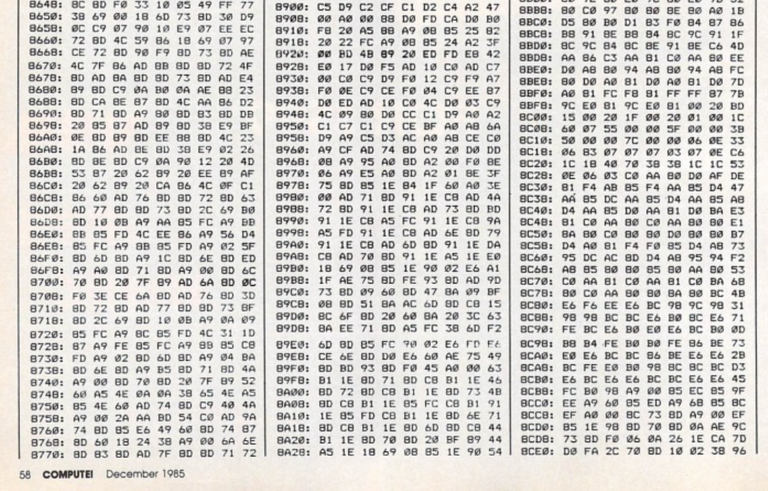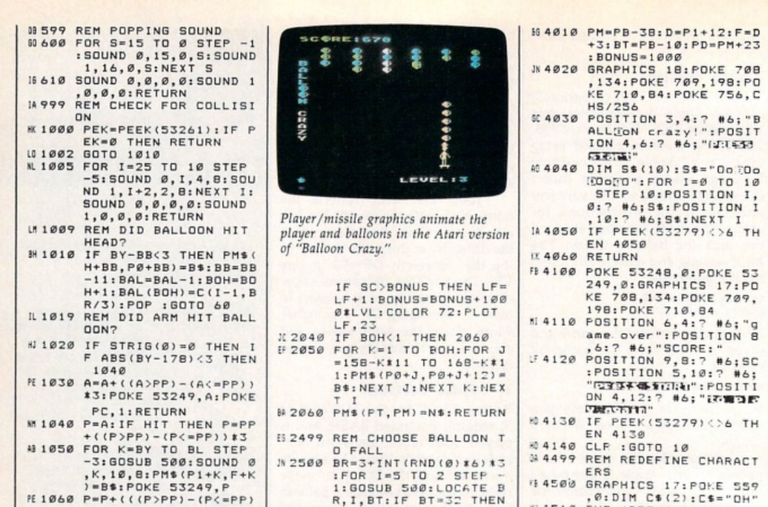These days we hear a lot about cryptography, encryption and data modulation. It all sounds very contemporary but in reality, experimenting with data encoding is as old as the idea of data itself. After all, data needs to be stored, it needs to be recovered, we might also decide to encrypt it for protection and so on. It’s all pretty straightforward. But there is one kind of data encoding that always seems to generate a bit more excitement than others and that’s transmedium.
As the name suggests, transmedium encoding allows us to convert data so that it can be stored on a totally different medium, usually one that was never purposed for such a task. Think of mapping colours as audio, for example. That’s one of the reasons why people find it exciting. It’s because it often seems to contravene our common sense. But it’s not just laypersons that find it interesting; experts also find this endeavour just as fun partly because of its hacker-maker vibe and partly because it provides an interesting challenge that often yields unexpected solutions.
Let’s discuss some of the most well-known examples that were conceived along with the rise of personal computers. We could go back thousands of years in time and say that invention of writing was the first real transmedium conception, as it allowed for oratory and spoken data to be saved on repurposed stone tablets and papyrus leaves. But let’s just focus on a modern understanding of data, that is, data in its electronic form.
Downloading games and apps through radio
Long before 5G and wireless networks, long before we had smartphones, there was already a neat and wireless way that let you download some of those latest games right from the comfort of your home. All you had to do was take your radio out and tune in for some late-night data broadcasting. Personal computers like Commodore and Apple II used cassettes to store data back then. A pretty impressive transmedium feat in itself, cassettes used sound modulations to discern zeros from ones and save electronic data in the form of audio. Far from being the most reliable, each modulation was usually saved twice so that decoder always had a backup stream it could fall back on in case of error. This meant each cassette allowed for up to 100kb of data and with speeds of up to 50 bytes per second. That might not sound like a lot, but with games often weighing less than 8kb, audio format turned out much cheaper and more convenient than expensive floppy drives (not to mention something as extravagant as hard drives).
At some point down the road, someone figured out that since we already have data stored as audio, why not convert it into AM waves and then broadcast over the radio. This had led to the creation of various tech-oriented radio shows where listeners would tune in with a tape recorder handy, eagerly waiting for modulated signals to start so that they could be played back on their personal computers as games or applications. One of the best well-known was The Chip Shop by BBC Radio 4. Four nights a week at around 00:30, while the main forecast was going out on FM wave, The Chip Shop broadcasted software to their listeners. Another one was Datarama on Radio West. Similar well-documented examples mention radio stations in Finland, Denmark, and former Yugoslavia. Apart from games, stations would also broadcast calculation tools, small dictionaries, educational programmes.
There’s not a lot of footage, but I found one recording here:
Eventually, in the late 80s, cassettes were replaced with floppy discs, but the idea of transmitting data in the form of modulated audio didn’t completely die. Today, it’s still used in fax machines and dial-up modems that allow users to tap into the internet via a telephone landline (albeit at a snail pace of 56 kbps).
Downloading games and apps through newspapers
As mentioned earlier, written language can be seen as the first transmedium encoder in the history of mankind. However, this method took this premise to its extreme. Instead of copying games, why not just write down the entire code structure, print it, and then let others type in those games back into their personal computers. No coding or computer language skills are necessary!
If this sounds extremely crude, then that’s because it was. Just take a look at this page from 1995 Compute! magazine, and you’ll understand just how tedious this type of data transfer could be.

No way to copy-paste, now way to scan and translate, instead users had to painstakingly type in every single page manually, line after line, string after string, hoping they wouldn't make any errors in the process.

After everything was done, it was time to press the RUN button and compile the code. In the best-case scenario, the title screen would appear, and the application would load. More often than not, though, it would fail due to one or more typos. The only way to get those fixed was to check them against the code printed in the magazine, which made the whole process even more time-consuming. But for many, it was worth it. The idea of accessing new games and programs on the cheap seemed too tempting to pass. You could also argue that such type-in games were a forerunner to cover floppies and cover CDs that computer magazines often included later on. Type-in games and programmes proved that people are willing to buy a magazine not for its articles or reviews but because of the free games that come with it.
Downloading games and apps through blockchain
It’s important to note all the previous transmedium methods, whether it was radio, newspapers, or cassettes, were viable only because of how relatively small those games and programmes were in size. A page of plain text can contain up to 2kb of data, so a game that’s up to 8kb in size could technically fit on 4 pages, or in the case of radio modulations, it would take around 4 minutes of the broadcast. This bottleneck isn’t something that can be solved easily. In fact, modern games and applications often measure hundreds of gigabytes in size and for that reason they can only be saved, decoded or transferred in their native digital medium.
Blockchain doesn’t solve this issue, but it exhibits some interesting properties that I will delve into in a moment. Its most well-known implementation is in the crypto space, where it’s used as a payment ledger. Each transaction creates a cryptographic hash that is then incorporated into the next transaction hash and so on. Because of that, it’s impossible to change any single entry without having to change the entire blockchain structure. Its resilience to any tampering is one of the main reasons it can be applied to finances, tracing, and other areas like supply chain management.
As time went by, developers started to utilise this ledger for other creative purposes. Coded instructions known as smart contracts, links to websites, text, identification numbers. It was only a matter of time before the first apps and games started to get embedded into the chain. Technically these are still transactions that are stacked on top of each other, but with the additional information interwoven into it. Because transaction blocks are usually small in size, this means only small and simple games or programmes can be coded that way. Popular social network Hive has a block limit of 64kb that’s hardcoded into its chain. While this might not seem a lot, enthusiasts have used it to embed retro games, compressed images, and of course, text.
I created some examples of images embedded into the blockchain here and here. Encoding data bloats the blockchain, so instead of fabulous Hive I used a relatively unknown and forgotten platform Steemit to do that ;)
Because blockchain is supposed to be transparent and decentralised, all other forms of data creatively encoded within also acquire the same property by default. In the case of text, this means any post or article automatically becomes censorship-resistant, images cannot be doctored or altered, games retain their original code, and so on. Of course, the same thing can be said about transmedium formats. Encoding data on a cassette made it acquire audio properties and allowed it to be sent over radio or telephone. Games stored inside newspapers acquired print attributes and could be xerocopied with ease. In the case of blockchain, its properties are security and immutability.
Downloading games and apps through DNA?
In 2017 a short movie was synthesised into a DNA strand and then successfully retrieved. Mind you, Eadweard Muybridge’s galloping horse is only 5 frames long, but it still made headlines for being the first of its kind. The animation was encoded into the DNA of a living bacteria, which then was left for a week so that the microbe could grow, divide and reproduce. It did all of that while still preserving data content stored inside its DNA.
Another creative example comes from the USENIX security conference. In this case, hackers encoded DNA with malicious information that would activate upon decoding. Data synthesised inside DNA contained malware that, if read by a computer system such as gene sequencer, would lead to so-called “buffer overflow” and, in turn, allow hackers to gain access to computer systems that operate the gene sequencer.
Currently, these are more experimental than practical. Costs of encoding data into the DNA of living organisms can be prohibitively expensive, and the amount of data that can be stored is limited. The entire galloping horse animation looks very lightweight; I would not expect it to be larger than 1kb. In the case of hacking experiments, it’s even less. Since gene sequencers splice DNA into chunks, malicious malware had to be only a few hundred bytes long. But these baby steps prove this type of data encoding is possible, and continued developments mean we will probably see more of it in the future.
The very idea of transmedium encoding is to find unexpected and creative ways to repurpose existing forms and methods; therefore, it’s tough to guess what might come next. Genetics and DNA encoding is just an example; another possibility would be quantum physics with elementary particles such as photons acting as vectors for data storage. Or perhaps something even more unconventional, who knows. One certain thing is that such attempts are inherently fun and challenging. Because of that, people will keep experimenting and trying out the most unusual concepts, even if only for the bragging rights.